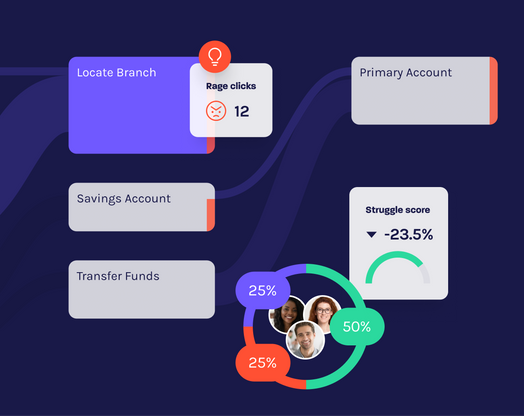
Achieving a better mobile app experience
Mobile users spend 90% of their time on apps and have high expectations for a seamless experience—but that’s not always what they get. In a Forrester survey, respondents said 70% of brands are barely or not at all meeting their mobile experience needs (source). And the price is high for businesses as they risk losing customers and revenue. This is even more critical as mobile users are forecasted to grow from current 7.1B to 7.49B by 2025 (source).
So how can we build apps that deliver better experiences? Read on to find out.
The challenges to building a better mobile app experience
First off, let’s acknowledge that mobile app development has its own inherent challenges compared to websites. It’s a complex landscape: there are more devices, operating systems and versions, not to mention battery and memory usage considerations.
Second, mobile app analytics are immature—only about 10 years old—next to website analytics, which have been around for decades. In a nutshell, current mobile analytics tools simply don’t provide the insights app developers require in order to improve their users’ experiences.
Put these two factors together and it’s no wonder there’s a lot of work to do to create a better mobile user experience. Mobile development, product, marketing and development teams are tasked with a lot of challenges to understand, such as:
- What are the common struggles customers experience?
- What’s causing abandonment throughout the app journey?
- How do you correlate feedback with app fixes or enhancements?
- What are the journey paths that lead to crashes?
- What are the most common paths users take in the app?
And that’s just the start.
It’s not just nice-to-know answers at this point. It’s crucial to attract new mobile app users and keep current customers from abandoning your app and losing revenue.
Keep your mobile app users coming back
The good news is that adopting a customer experience intelligence (CX) solution can keep your mobile users coming back. With a CX solution for native mobile, you can visualize user behavior, correlate that with business metrics and layer it with app performance. Armed with these insights app developers and product owners know exactly where and how to improve engagement, customer satisfaction and revenue.
More and more companies are building or buying a CX solution for their native mobile apps to improve the user experience. To explore these questions and more in depth in our checklist, Eight Considerations for Buying or Building a Mobile App CX Analytics Solution.








